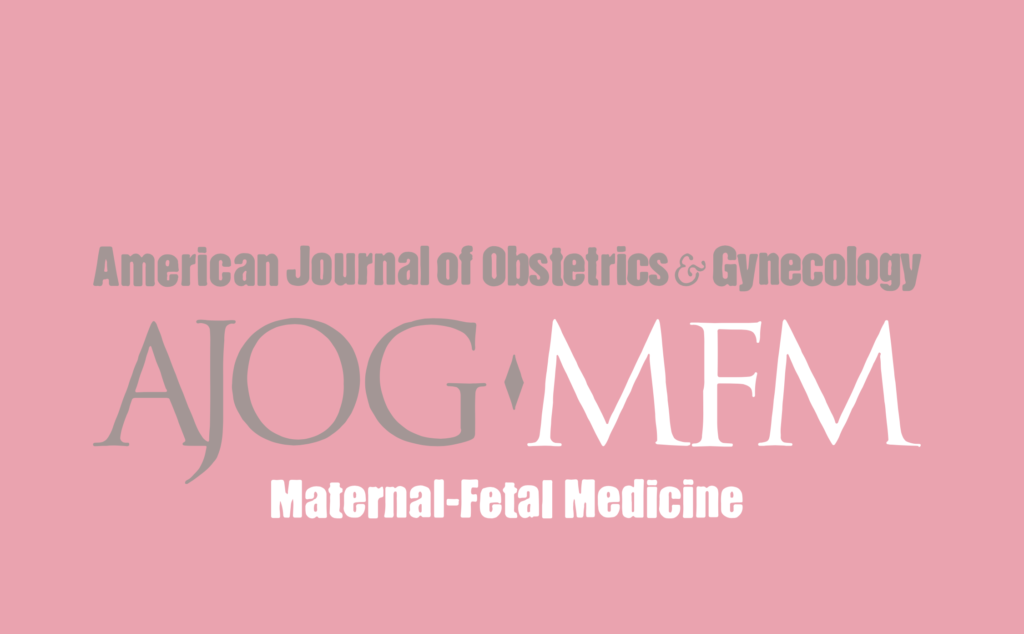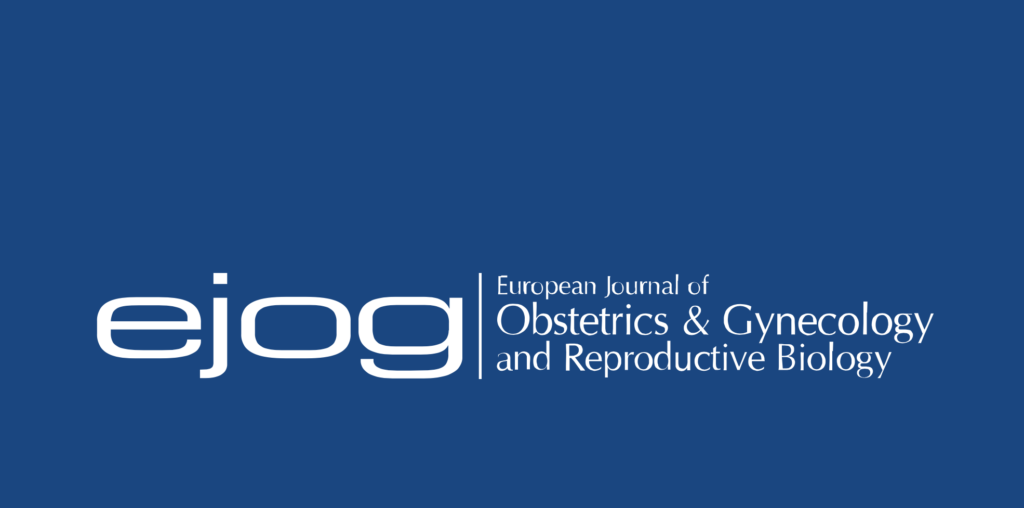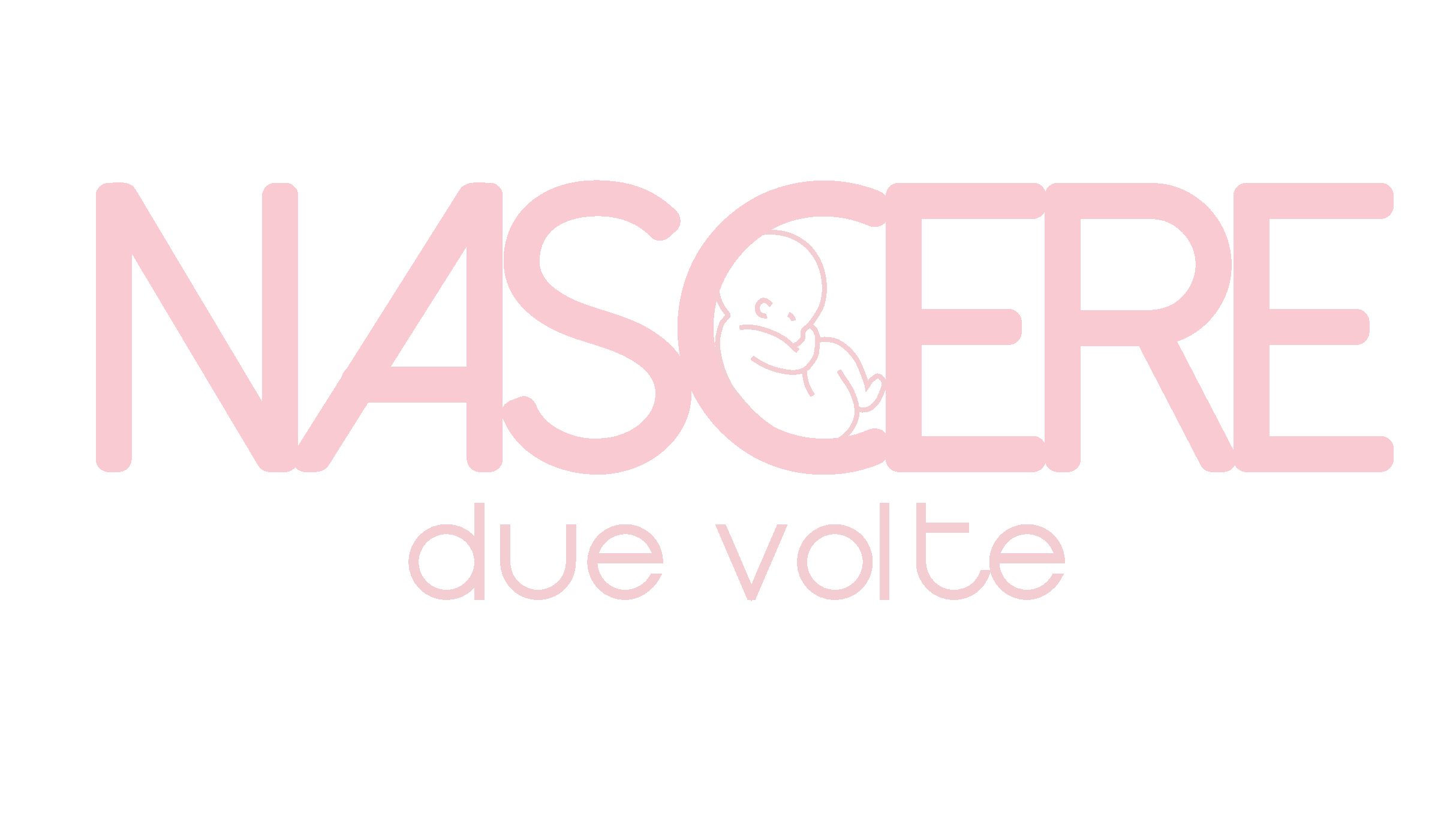Notizie

The maternal pelvic floor and labor outcome
Aly Youssef, Elena Brunelli, Gianluigi Pilu, Hans Peter Dietz
Vaginal birth is the major cause of pelvic floor damage. The development of transperineal ultrasound has improved our understanding of the relationship between vaginal birth and pelvic floor dysfunction. The female pelvic floor dimensions and function can be assessed reliably in pregnant women. Maternal pushing associated with pelvic floor muscle relaxation is the central requirement of vaginal birth. Many studies have evaluated the role of the pelvic floor on labor outcomes. Smaller levator hiatal dimensions and incomplete or absent levator ani muscle relaxation seem to be associated with a longer duration of the second stage of labor and a higher risk of cesarean and operative deliveries. Here, we presented an overview of the current knowledge of the correlation between female pelvic floor dimension and function, as assessed by transperineal ultrasound, and labor outcome.

Machine learning risk prediction of mortality for patients undergoing surgery with perioperative SARS-CoV-2: the COVIDSurg mortality score
COVIDSurg Collaborative
To support the global restart of elective surgery, data from an international prospective cohort study of 8492 patients (69 countries) was analysed using artificial intelligence (machine learning techniques) to develop a predictive score for mortality in surgical patients with SARS-CoV-2. We found that patient rather than operation factors were the best predictors and used these to create the COVIDsurg Mortality Score (https://covidsurgrisk.app). Our data demonstrates that it is safe to restart a wide range of surgical services for selected patients.
Increased nuchal translucency can be ascertained using transverse planes
Elisa Montaguti, Roberta Rizzo, Josefina Diglio, Gaetana Di Donna, Elena Brunelli, Maria Cofano, Anna Sedentari, Jacopo Lenzi, Cesare Battaglia, Gianluigi Pilu
Background: The detection of increased nuchal translucency is crucial for the assessment risk of aneuploidies and other fetal anomalies.
Objective: This study aimed to investigate the ability of a transverse view of the fetal head to detect increased fetal nuchal translucency at 11 to 13 weeks of gestation.
Study design: This was a prospective study enrolling a nonconsecutive series of women who attended our outpatient clinic from January 2020 to April 2021 for combined screening and were examined by operators certified by the Fetal Medicine Foundation. In each patient, nuchal translucency measurements were obtained both from a median sagittal view and from a transverse view. A second sonologist blinded to the results of the first examination obtained another measurement to assess intermethod and interobsever reproducibility.
Results: A total of 1023 women were enrolled. An excellent correlation was found between sagittal and transverse nuchal translucency measurements, with a mean difference of 0.01 mm (95% confidence interval, -0.01 to 0.02). No systematic difference was found between the 2 techniques. The inter-rater reliability (intraclass correlation coefficient, 0.957; 95% confidence interval, 0.892-0.983) and intrarater reliability (intraclass correlation coefficient, 0.976; 95% confidence interval, 0.941-0.990) of axial measurements were almost perfect. Transverse measurements of 3.0 mm identified all cases with sagittal measurements of ≥3.0 with a specificity of 99.7%; transverse measurements of >3.2 mm identified all cases with sagittal measurements of 3.5 mm with a specificity of 99.7%. The time required to obtain transverse nuchal translucency measurements was considerably shorter than for sagittal measurements, particularly when the fetus had an unfavorable position.
Conclusion: When the sonogram is performed by an expert sonologist, the difference in nuchal translucency measurement obtained with a transverse or sagittal plane is minimal. Increased nuchal translucency can be reliably identified by using transverse views, and in some cases, this may technically be advantageous.

Fetal aortic valvuloplasty in a patient with critical, congenital aortic valve stenosis and severe left ventricular dysfunction
Maurizio Brighenti, Anna Balducci, Gabriele Egidy Assenza, Maria Elisabetta Mariucci, Antonella Perolo, Gianluigi Pilu, Andrea Donti
We present a case of prenatal diagnosis of critical congenital aortic valve stenosis with progressive systolic left ventricular failure. An ultrasound-guided balloon aortic valvuloplasty was performed at 28 weeks of gestational age because of left ventricular dysfunction associated with signs of fetal heart failure. There were no significant post-procedural complications and the pregnancy was carried to term with elective cesarean section at 38 weeks of gestational age. At birth, an echocardiogram showed severe aortic valve stenosis with global hypokinesia of the left ventricle. Therefore a percutaneous balloon aortic valvuloplasty was repeated through transseptal approach with prompt improvement of the antegrade aortic flow and of the left ventricular systolic function. The baby is currently 2 months old and he is doing fine.

Role of prenatal magnetic resonance imaging in fetuses with isolated severe ventriculomegaly at neurosonography: A multicenter study
Daniele Di Mascio, Asma Khalil, Gianluigi Pilu, Giuseppe Rizzo, Massimo Caulo, Marco Liberati, Antonella Giancotti, Christoph Lees, Paolo Volpe, Danilo Buca, Ludovica Oronzi, Alice D’Amico, Sara Tinari, Tamara Stampalija, Ilaria Fantasia, Lucia Pasquini, Giulia Masini, Roberto Brunelli, Valentina D’Ambrosio, Ludovico Muzii, Lucia Manganaro, Amanda Antonelli, Giada Ercolani, Sandra Ciulla, Gabriele Saccone, Giuseppe Maria Maruotti, Luigi Carbone, Fulvio Zullo, Claudiana Olivieri, Tullio Ghi, Tiziana Frusca, Andrea Dall’Asta, Silvia Visentin, Erich Cosmi, Francesco Forlani, Alberto Galindo, Cecilia Villalain, Ignacio Herraiz, Filomena Giulia Sileo, Olivia Mendez Quintero, Ginevra Salsi, Gabriella Bracalente, José Morales-Roselló, Gabriela Loscalzo, Marcella Pellegrino, Marco De Santis, Antonio Lanzone, Cecilia Parazzini, Mariano Lanna, Francesca Ormitti, Francesco Toni, Flora Murru, Marco Di Maurizio, Elena Trincia, Raquel Garcia, Olav Bennike Bjørn Petersen, Lisa Neerup, Puk Sandager, Federico Prefumo, Lorenzo Pinelli , Ilenia Mappa, Cecilia Acuti Martellucci, Maria Elena Flacco, Lamberto Manzoli, Ilaria Giangiordano, Luigi Nappi, Giovanni Scambia, Vincenzo Berghella, Francesco D’Antonio
Objective: The aim of this study was to report the rate of additional anomalies detected exclusively at prenatal magnetic resonance imaging (MRI) in fetuses with isolated severe ventriculomegaly undergoing neurosonography.
Method: Multicenter, retrospective, cohort study involving 20 referral fetal medicine centers in Italy, United Kingdom, Spain and Denmark. Inclusion criteria were fetuses affected by isolated severe ventriculomegaly (≥15 mm), defined as ventriculomegaly with normal karyotype and no other additional central nervous system (CNS) and extra-CNS anomalies on ultrasound. In all cases, a multiplanar assessment of fetal brain as suggested by ISUOG guidelines on fetal neurosonography had been performed. The primary outcome was the rate of additional CNS anomalies detected exclusively at fetal MRI within two weeks from neurosonography. Subgroup analyses according to gestational age at MRI (<vs ≥ 24 weeks of gestation) and the laterality of ventriculomegaly (unilateral vs bilateral) were also performed. Univariate and multivariate logistic regression analysis was used to analyze the data.
Results: 187 fetuses with a prenatal diagnosis of isolated severe ventriculomegaly on neurosonography were included in the analysis. Additional structural anomalies were detected exclusively at prenatal MRI in 18.1% of cases. When considering the type of anomaly, malformations of cortical development were detected on MRI in 32.4% cases, while midline or acquired (hypoxemic/hemorrhagic) lesions were detected in 26.5% and 14.7% of cases, respectively. There was no difference in the rate of additional anomalies when stratifying the analysis according to either gestational age at MRI or laterality of the lesion. At multivariate logistic regression analysis, the presence of additional anomalies only found at MRI was significantly higher in bilateral compared versus unilateral ventriculomegaly (OR: 4.37, 95% CI 1.21-15.76; p = 0.04), while neither maternal body mass index, age, severity of ventricular dilatation, interval between ultrasound and MRI, nor gestational age at MRI were associated with the likelihood of detecting associated anomalies at MRI.
Conclusion: The rate of associated anomalies detected exclusively at prenatal MRI in fetuses with isolated severe ventriculomegaly is lower than previously reported, but higher compared to isolated mild and moderate ventriculomegaly. Fetal MRI should be considered as a part of the prenatal assessment of fetuses presenting with isolated severe ventriculomegaly at neurosonography.
Sonographic knowledge of occiput position to decrease failed operative vaginal delivery: a systematic review and meta-analysis of randomized controlled trials
Federica Bellussi, Daniele Di Mascio, Ginevra Salsi, Tullio Ghi, Andrea Dall’Asta, Fabrizio Zullo, Gianluigi Pilu, Joana G Barros, Diogo Ayres-de-Campos, Vincenzo Berghella
Objective: This study aimed to assess the efficacy of sonographic assessment of fetal occiput position before operative vaginal delivery to decrease the number of failed operative vaginal deliveries.
Data sources: The search was conducted in MEDLINE, Embase, Web of Science, Scopus, ClinicalTrial.gov, Ovid, and Cochrane Library as electronic databases from the inception of each database to April 2021. No restrictions for language or geographic location were applied.
Study eligibility criteria: Selection criteria included randomized controlled trails of pregnant women randomized to either sonographic or clinical digital diagnosis of fetal occiput position during the second stage of labor before operative vaginal delivery.
Methods: The primary outcome was failed operative vaginal delivery, defined as a failed fetal operative vaginal delivery (vacuum or forceps) extraction requiring a cesarean delivery or forceps after failed vacuum. The summary measures were reported as relative risks or as mean differences with 95% confidence intervals using the random effects model of DerSimonian and Laird. An I2 (Higgins I2) >0% was used to identify heterogeneity.
Results: A total of 4 randomized controlled trials including 1007 women with singleton, term, cephalic fetuses randomized to either the sonographic (n=484) or clinical digital (n=523) diagnosis of occiput position during the second stage of labor before operative vaginal delivery were included. Before operative vaginal delivery, fetal occiput position was diagnosed as anterior in 63.5% of the sonographic diagnosis group vs 69.5% in the clinical digital diagnosis group (P=.04). There was no significant difference in the rate of failed operative vaginal deliveries between the sonographic and clinical diagnosis of occiput position groups (9.9% vs 8.2%; relative risk, 1.14; 95% confidence interval, 0.77-1.68). Women randomized to sonographic diagnosis of occiput position had a significantly lower rate of occiput position discordance between the evaluation before operative vaginal delivery and the at birth evaluation when compared with those randomized to the clinical diagnosis group (2.3% vs 17.7%; relative risk, 0.16; 95% confidence interval, 0.04-0.74; P=.02). There were no significant differences in any of the other secondary obstetrical and perinatal outcomes assessed.
Conclusion: Sonographic knowledge of occiput position before operative vaginal delivery does not seem to have an effect on the incidence of failed operative vaginal deliveries despite better sonographic accuracy in the occiput position diagnosis when compared with clinical assessment. Future studies should evaluate how a more accurate sonographic diagnosis of occiput position or other parameters can lead to a safer and more effective operative vaginal delivery technique.

Isolated Upward Rotation of the Fetal Cerebellar Vermis (Blake's Pouch Cyst) Is a Normal Variant: An Analysis of 111 Cases
Ginevra Salsi, Grazia Volpe, Elisa Montaguti, Tiziana Fanelli, Francesco Toni, Monica Maffei, Carmela Votino, Eva Pompilii, Gianluigi Pilu, Paolo Volpe
Introduction: The objective of the study was to provide more detailed data about fetal isolated upward rotation of the cerebellar vermis rotation (Blake’s pouch cyst) in particular regarding pregnancy outcome.
Methods: This is a retrospective study of all cases of fetal isolated upward rotation of the cerebellar vermis (URCV) diagnosed in 3 referral centers in Italy from January 2009 to November 2019. Whenever possible, prenatal magnetic resonance imaging (MRI) was performed and a fetal karyotype was obtained. A detailed follow-up was obtained by consultation of medical records, interview with the parents, and the pediatricians.
Results: Our study population included 111 patients with a prenatal diagnosis of isolated URCV made at a median gestational age of 21 weeks +3 days (interquartile range (IQR) 21 + 0-22 + 2). The median brain stem-vermis (BV) angle was 27° (IQR 24-29°). In 37.9% of the cases, a regression of the finding with restoration of normal anatomy was noted at a follow-up scan or at postnatal checks. A BV angle of 25° or less predicted regression with a probability in excess of 90%. MRI was performed in utero or at birth in 101 patients and always confirmed sonographic diagnosis. Fetal CGH array and/or karyotype was available in 97 cases and was always normal, but in 1 case. A postnatal follow-up was available in 102 infants (mean 7 months, range 0-10 years of age) and documented a normal neurologic development in all the cases.
Conclusions: Isolated URCV is most likely a normal variant of fetal anatomy without clinical consequences, at least at an early follow-up. A BV angle of 25° or less predicts intrauterine regression of the finding, but the outcome is good in all the cases. When a confident sonographic diagnosis is made, MRI is not mandatory. The risk of a chromosomal anomaly in these cases is probably low.

Prenatal sonography of the foramen ovale predicts urgent balloon atrial septostomy in neonates with complete transposition of the great arteries
Anna Nunzia Della Gatta, Elena Contro, Jacopo Lenzi , Anna Balducci, Gaetano Gargiulo, Tetyana Bodnar, Daniela Palleri, Simone Bonetti, Tammam Hasan, Andrea Donti, Luca Ragni, Emanuela Angeli, Ylenia Bartolacelli, Laura Larcher, Gianluigi Pilu, Antonella Perolo
Background: Hypoxia caused by inadequate intracardiac mixing owing to a restrictive foramen ovale is a potentially life-threatening complication in neonates with dextro-transposition of the great arteries. An urgent balloon atrial septostomy is a procedure of choice in such cases, but dependent on the availability of a 24-hour interventional cardiology facility. The prenatal identification of predictors for an urgent balloon atrial septostomy at birth would help in optimizing the management of these neonates, minimizing the risk of hypoxic damage.
Objective: This study aimed to predict with prenatal echocardiography the need of urgent balloon atrial septostomy in neonates with dextro-transposition of the great arteries.
Study design: This was a retrospective cohort study of patients with a prenatal diagnosis of transposition of the great arteries that were delivered in our center between 2010 and 2019, for whom fetal ultrasound echocardiograms obtained at less than 3 weeks before delivery were available. The following parameters were systematically obtained at fetal echocardiography: size and appearance of the foramen ovale, septum primum excursion (foramen ovale flap angle at the maximal excursion), diameters of the atria, and size of the ductus arteriosus. Balloon atrial septostomy was defined as urgent if performed within 12 hours from birth in neonates with restrictive foramen ovale. Neonatal follow-up was obtained through medical records analysis.
Results: From November 2007 to April 2019, 160 fetuses with complete transposition of the great arteries were referred to our echocardiography laboratory and 60 of these were included in the analysis; 27 underwent urgent balloon atrial septostomy, 11 elective balloon atrial septostomy, and 22 no balloon atrial septostomy. The size of the foramen ovale was the best predictor of an urgent balloon atrial septostomy. A measurement of >6.5 mm had a sensitivity of 100% and a false positive rate of 45%.
Conclusion: Fetal echocardiography predicts the need of an urgent balloon atrial septostomy in fetuses with dextro-transposition of the great arteries although with a limited precision. In our experience, a measurement of the foramen ovale within 3 weeks of delivery had the greatest accuracy.


Breech progression angle: new feasible and reliable transperineal ultrasound parameter for assessment of fetal breech descent in birth canal
A Youssef, E Brunelli, M Fiorentini, J Lenzi, G Pilu, A El-Balat
Objective: To assess the feasibility and reliability of transperineal ultrasound in the assessment of fetal breech descent in the birth canal, by measuring the breech progression angle (BPA).
Methods: Women with a singleton pregnancy with the fetus in breech presentation between 34 and 41 weeks’ gestation were recruited. Transperineal ultrasound images were acquired in the midsagittal view for each woman, twice by one operator and once by another. Each operator measured the BPA after anonymization of the transperineal ultrasound images. BPA was defined as the angle between a line running along the long axis of the pubic symphysis and another line extending from the most inferior portion of the pubic symphysis tangentially to the lowest recognizable fetal part in the maternal pelvis. Each operator was blinded to all other measurements performed for each woman. Intra- and interobserver reproducibility of BPA measurement was evaluated using the intraclass correlation coefficient (ICC). To investigate the presence of any bias, intra- and interobserver agreement was also analyzed using Bland-Altman analysis. Student’s t-test and Levene’s W0 test were used to investigate whether a number of different clinical factors had an effect on systematic differences and homogeneity, respectively, between BPA measurements.
Results: Overall, 44 women were included in the analysis. BPA was measured successfully by both operators on all images. Both intra- and interobserver agreement analyses showed excellent reproducibility in BPA measurement, with ICCs of 0.88 (95% CI, 0.80-0.93) and 0.83 (95% CI, 0.71-0.90), respectively. The mean difference between measurements was 0.4° (95% CI, -1.4 to 2.2°) for intraobserver repeatability and -0.4° (95% CI, -2.6 to 1.8°) for interobserver repeatability. The upper limits of agreement were 12.0° (95% CI, 8.9-15.1°) and 13.6° (95% CI, 9.9-17.3°) for intra- and interobserver repeatability, respectively. The lower limits of agreement were -11.2° (95% CI, -14.3 to -8.1°) and -14.4° (95% CI, -18.2 to -10.7°) for intra- and interobserver repeatability, respectively. No systematic difference between BPA measurements was found on either intra- or interobserver agreement analysis. None of the clinical factors examined (maternal body mass index, maternal age, gestational age at the ultrasound scan and parity) showed a statistically significant effect on intra- or interobserver reliability.
Conclusions: BPA represents a new feasible and highly reproducible measurement for the evaluation of fetal breech descent in the birth canal. Future studies assessing its usefulness in the prediction of successful external cephalic version and breech vaginal delivery are needed. © 2021 International Society of Ultrasound in Obstetrics and Gynecology.

SARS-CoV-2 vaccination modelling for safe surgery to save lives: data from an international prospective cohort study
COVIDSurg Collaborative, GlobalSurg Collaborative
Background: Preoperative SARS-CoV-2 vaccination could support safer elective surgery. Vaccine numbers are limited so this study aimed to inform their prioritization by modelling.
Methods: The primary outcome was the number needed to vaccinate (NNV) to prevent one COVID-19-related death in 1 year. NNVs were based on postoperative SARS-CoV-2 rates and mortality in an international cohort study (surgical patients), and community SARS-CoV-2 incidence and case fatality data (general population). NNV estimates were stratified by age (18-49, 50-69, 70 or more years) and type of surgery. Best- and worst-case scenarios were used to describe uncertainty.
Results: NNVs were more favourable in surgical patients than the general population. The most favourable NNVs were in patients aged 70 years or more needing cancer surgery (351; best case 196, worst case 816) or non-cancer surgery (733; best case 407, worst case 1664). Both exceeded the NNV in the general population (1840; best case 1196, worst case 3066). NNVs for surgical patients remained favourable at a range of SARS-CoV-2 incidence rates in sensitivity analysis modelling. Globally, prioritizing preoperative vaccination of patients needing elective surgery ahead of the general population could prevent an additional 58 687 (best case 115 007, worst case 20 177) COVID-19-related deaths in 1 year.
Conclusion: As global roll out of SARS-CoV-2 vaccination proceeds, patients needing elective surgery should be prioritized ahead of the general population.


ISUOG Practice Guidelines (updated): sonographic examination of the fetal central nervous system. Part 2: performance of targeted neurosonography
D Paladini, G Malinger, R Birnbaum, A Monteagudo, G Pilu, L J Salomon, I E Timor-Tritsch
Central nervous system (CNS) malformations are some of the most common congenital abnormalities, with an incidence at birth of 14/10 0001. Neural tube defects are the most frequent CNS malformation, with a prevalence in pregnancy of 52/100 0002. The incidence of intracranial abnormalities with an intact neural tube is uncertain, as most of these abnormalities are likely to escape detection at birth and manifest only in later life. Long-term follow-up studies suggest, however, that the incidence may be as high as one in 100 births3. During pregnancy, ultrasound screening for CNS malformations is carried out mainly at the time of the mid-trimester anomaly scan4 and relies on visualization of three axial planes, namely, the transventricular, transthalamic and transcerebellar planes; basic evaluation of the fetal spine is also part of this screening procedure, and has been described in Part 1 of these guidelines5. However, of note is that some malformations may be detectable as early as the first-trimester scan.
The focus of this Guideline is to describe the protocol for the diagnostic ultrasound examination that should be performed in any case in which there is an increased risk of CNS malformation. A detailed list of indications for this targeted fetal neurosonography was published in Part 1 of these guidelines5. It is commonly accepted that targeted fetal neurosonography has a much greater diagnostic potential than does the basic screening examination, and is particularly helpful in the evaluation of complex malformations6, 7. However, this targeted examination of the fetal CNS requires a high level of expertise that is not always available in many ultrasound facilities, since the method has not yet been implemented universally.
